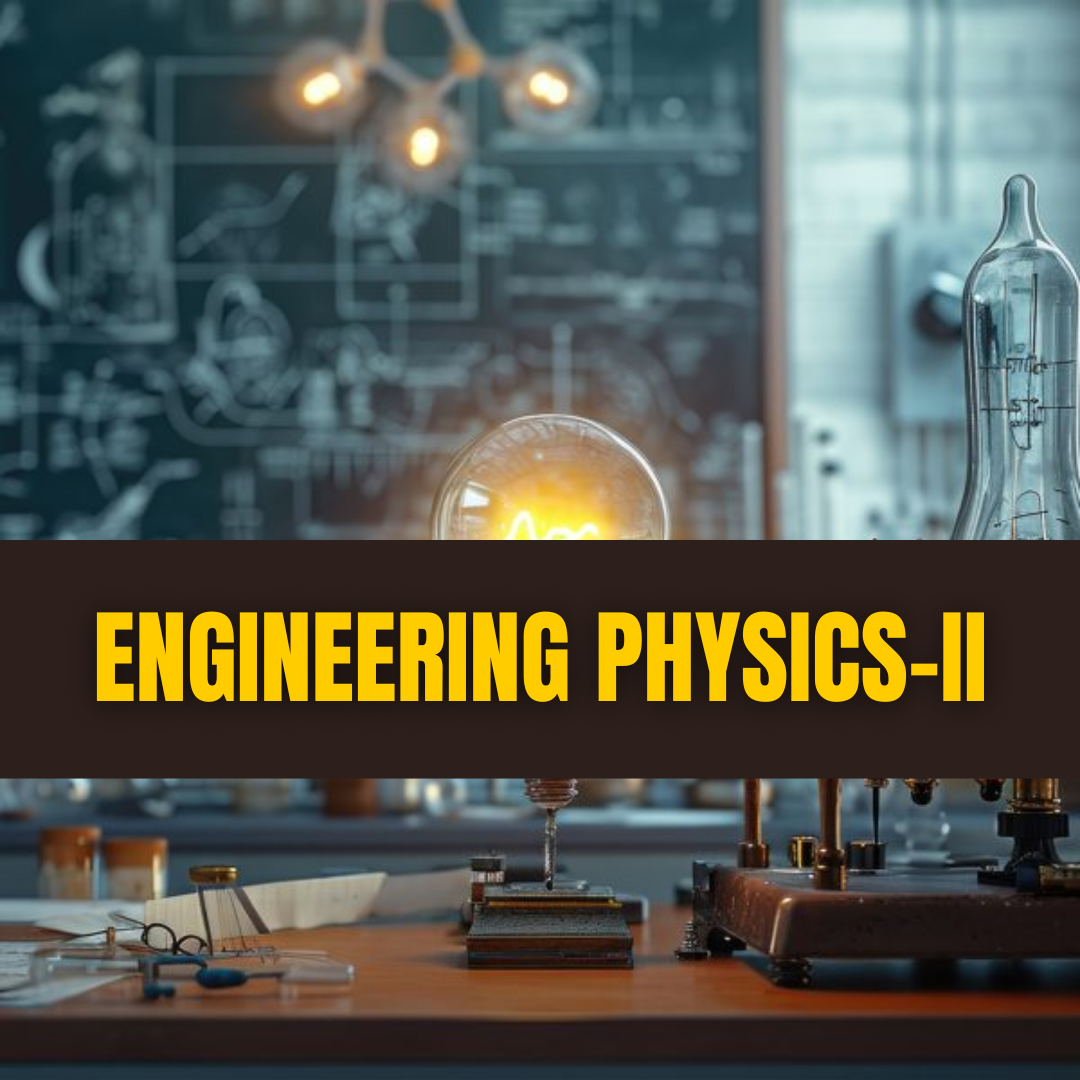Engineering Physics-II
11.98$
About the course
Engineering Physics-II covers Wave Mechanics, Superconductivity of Substances, Nano-Materials, Dielectric and Magnetic Properties of Materials. We also cover basics of Thermodynamics and Ultrasonic. Study of these subjects gives a broader understanding of materials and their characteristics.
What will you learn?
The complete online syllabus of this course comprises 6 Learning Modules | 108 Topics of Learning | 5 Hours of Learning | 37 Assessments
Module
- Wave Mechanics
- Superconductivity and Nanomaterial
- Dielectric and Magnetic Properties of Materials
- Crystal Physics and X rays
- Thermodynamics
- Ultrasonics
Topics of Learning
- Failure of Classical Mechanics
- Quantum Mechanics
- Particle and Wave
- Michelson-Morley Experiment
- Wave Particle Duality of Radiations
- De-Broglie’s Concept of Matter Waves
- De-Broglie Wavelength
- Properties of Matter Waves
- Phase and Group Velocity
- Particle Velocity
- Heisenberg Uncertainty Principle
- Properties of Wave Function
- Schrodinger Time Dependent Wave Equation
- Schrodinger Time Independent Wave Equation
- Schrodinger’s Wave Equation-Particle in 1-D Box
- Energy Eigen Values for a Free Particle
- Superconductivity
- Critical Temperature
- Thermodynamics of Superconductors
- Meissner Effect
- Type I Superconductors
- Type II Superconductors
- London Penetration Depth
- London Equation
- BCS Theory
- Application of Superconductors
- Nanotechnology and Nanomaterials
- Nanoscale
- Basic Element of Nanomaterials
- Classification of Nanomaterials
- Synthesis of Nanomaterials
- Ball Milling
- What is Carbon Nanotube
- Development of Carbon Nanotubes: Arc Method
- Development of Carbon Nanotubes: Laser Ablation Method
- Properties of Carbon Nanotubes
- Properties of nanomaterials
- Application of Nanomaterials
- Introduction to Dielectric Materials
- Dielectric Materials and its Types
- Permittivity and Dielectric Constant
- Polarization and Polarizability
- Electrical Susceptibility
- Electronic Polarization
- Ionic Polarization
- Orientation Polarization
- Space Charge Polarization
- Dielectric Breakdown
- Classification of Magnetic Material
- Fundamental Terms related to Magnetism
- Diamagnetic Materials
- Paramagnetic Materials
- Ferromagnetic Materials
- Magnetostriction
- Magnetic
- Anti-Ferromagnetic Materials
- Ferrimagnetic Materials
- Space Lattice
- Translation Vector
- Bravais Lattices
- Number of Atoms Per Unit Cell
- Coordination Number
- Atomic Radius
- Packing Density
- Miller Indices
- Bremsstrahlung X-rays
- Characteristic X-rays
- Bragg’s Law
- Bragg’s Spectrometer
- Crystallography
- Thermodynamic System and Surrounding
- Macroscopic and Microscopic Approach
- Control Volume and Control Surface
- Concept of Continuum
- Homogenous and Heterogeneous Systems
- Statement of First Law
- Internal Energy
- Enthalpy
- PMM-1
- Heat Transfer: Constant Volume Process
- Heat Transfer: Constant Pressure Process
- Heat Transfer: Isothermal Process
- Heat Transfer: Adiabitic Process
- Heat Transfer: Polytropic Process
- Relation between the Specific Heats and Gas Constants
- Free Expansion
- steady Flow Energy Equations
- Application of Steady Flow Energy Equations
- Unsteady Flow or Transient State
- Thermal Reservoir
- Kelvin Plank Statement of Second Law
- Concept of Heat Engine
- Clausius Statement Of Second Law
- Concept of Refrigerator
- Concept of Heat Pump
- PMM-2
- Equivalence of Second Law Statements
- Carnot Cycle
- Carnot’s Theorem
- Thermodynamic Temperature Scale
- The efficiency of Reversible Heat Engine
- COP of Reversible Refrigerator
- COP of Reversible Heat Pump
- Concept of Entropy and its Physical Meaning
- Clausius Inequality
- Change in Entropy for a Cycle
- Change in Entropy for different Reversible Processes
- Change in Entropy for Irreversible Process
- Ultrasonics
- Piezoelectric Method
For a quick review, please watch our videos here 




